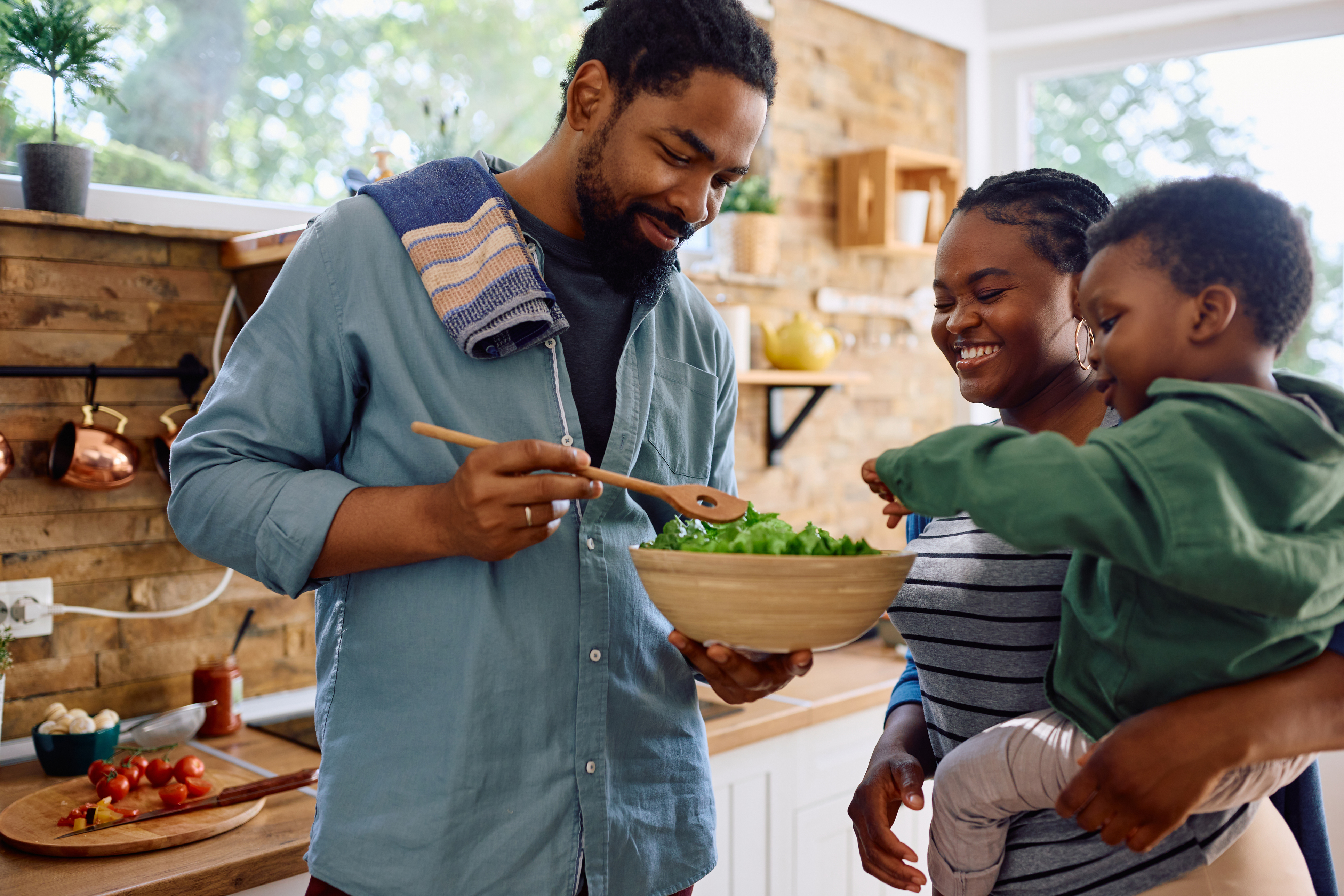1. Embrace food as medicine.
During what feels like an extended coronavirus lockdown, now more than ever is a time to embrace food as medicine. Nutritious eating and physical activity are powerful tools to keep kids healthy, calm and connected, even during challenging times. Dietary choices can strengthen or weaken our body’s ability to fight COVID-19. Plus, spending more time at home can provide a great opportunity to foster better family food and eating habits – and get your kids into the kitchen with you.
2. Engage senses other than taste.
Touching food and appreciating different textures helps kids become more comfortable with new foods. Have your child knead the dough, rip greens such as lettuce or kale, rinse fruits and vegetables, and sift flour through their fingers. Let them smell fragrant herbs or extracts such as mint, basil or vanilla. Expose them to an array of colors, and let them hear the crunch of fresh fruits and vegetables. And of course, tasting is the final sense to engage.
3. Use cooking as a tool to raise smart kids.
Your child can learn many lessons while cooking with you. There are math concepts in every recipe: counting, measuring, addition and fractions. Discuss different science concepts such as how food grows, how temperature changes food properties, state changes from solid to liquid to gas, or explain the nutrients our bodies get from different food groups and why they are important. Recipes teach reading and planning skills.
4. Make cooking part of family culture.
Family meal preparation allows you to share stories of the foods you ate growing up and to celebrate your cultural heritage by passing down recipes. Make cooking part of a healthy home environment and a culture of wellness. Help your child find seasonal recipes and build traditions around them. Make a commitment to make and eat fresh, unprocessed foods together to build the foundation of a healthy lifestyle. Try the Chop Chop Family Cooking Club for healthy, kid-friendly recipes.
5. Keep it safe.
Teach kids the importance of being careful and staying safe while cooking. Start with making sure everyone washes their hands. Teach them how to hold kitchen utensils safely, how to prevent burns with oven mitts, and how to safely use appliances, including turning them on and off. Always supervise kids in the kitchen to avoid accidents and make sure they are only doing safe, age-appropriate tasks. Kids of all ages can join in the cooking fun; older kids can chop and sauté vegetables and the littlest ones can rinse foods, measure or stir.
6. Ask for input.
Help your child feel more included and excited about cooking by asking them to be part of choosing recipes and meal preparation. Make a shopping list together (for tips, check out our meal planning advice), or have your older child prepare the shopping list on their own. Encourage them to be critics of meals you’ve shared, or to suggest other flavors or spices. Talk about how people have different taste preferences, and trying new foods is how we develop them. Rotate other meal-related tasks such as setting or clearing the table or washing dishes.
Cooking with your child sets the stage for future cooking adventures and happy family memories in the kitchen. It’s a start to making healthy eating a way of life. As a bonus, you and your family get to enjoy tasty, nutritious meals.


